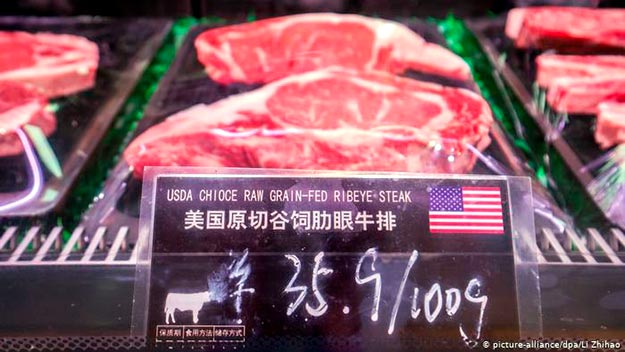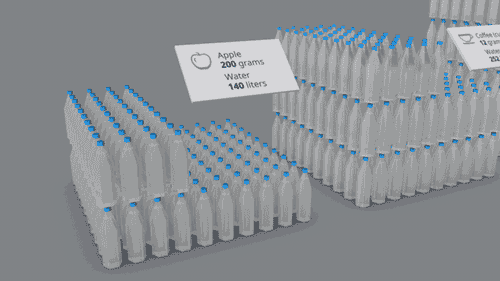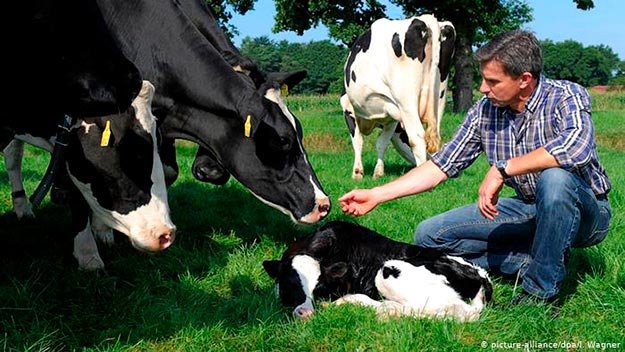Water is a precious resource. There’s a lot of talk about how to reduce its consumption, but the crucial food production sector is often excluded. An Augmented Reality infographic in the article offers deeper insights.
Germans are making every effort to save water: They turn off the shower when soaping, collect rainwater for watering the garden, and install toilet flushes with economy buttons. These actions do little more than serving a clear conscience, though. Despite their efforts, Germans are among the world’s top offenders when it comes to wasting water.
Virtual water
According to Germany’s national association of water pollution control (Vereinigung Deutscher Gewässerschutz), every German citizen consumes about 5,200 litres of water on average – per day. However, it’s not the toilet flush that drives up consumption: it’s the virtual water. In other words: The water that is used in the production of electronic devices, packaging and clothing – and in the production of food.
Do you know how much water it takes to produce an apple, a cup of coffee, or a steak?
The following Augmented Reality infographic (iOS only, Android coming soon) offers a visual comparison of the virtual water consumption of these foods. Spoiler: The steak doesn’t perform that well.
- Find a well-lit open space
- Point your device towards the ground and tap the cube icon on the top right corner of the preview model
- Follow on-screen instructions: Slowly move the phone, let your device scan the ground and place the AR content
- You’re now looking at a room-scale 3D graphic: Move around, tilt your phone, explore different perspectives
While an apple (200 grams) can be grown with 140 litres of water, an only moderately nutritious cup of coffee (12 grams of ground beans) already requires 252 litres. The beef steak (also 200 grams) is of course quite substantial, but must be “grown” with no less than 3,098 litres of water. Put in another way, the production of a steak consumes as many resources as the production of 22 apples in this case.
Green, blue, and saved water
Ultimately, of course, it all depends on where the food is produced – and what kind of methods are applied. It’s particularly important to distinguish between green and blue water. Green water occurs naturally (precipitation, soil moisture) and can be used more generously. Blue water, on the other hand, is expensive, “artificial” water that comes from irrigation plants.
That being said, the water balance is by no means the only crucial factor in the ecological balance of a certain type of food. For example, intensive cattle farming in Germany consumes up to 50% less water than free range grazing. However, this is hardly a call for a complete switch to intensive farming – but rather one for a less meaty diet.
A good way to reduce water consumption (by up to 80 percent) in the cultivation of agricultural crops is to use the drip irrigation method. In this method, the water is not sprayed on the entire plant, but applied to the soil in droplets. It thus penetrates directly to the roots instead of evaporating to a large extent in the ambient air.
However, the savings made are limited if resources are used wastefully elsewhere in the production or supply chain – and the agricultural crops are processed into cattle feed, for example. In any case, the often high consumption of virtual water is an important and complex topic that deserves more attention.
Source: https://www.dw.com/
Dear User/Visitor! Please, answer on our questions: tick off one of the positions – your answer will make us able to improve our site and make it more interesting and useful!




